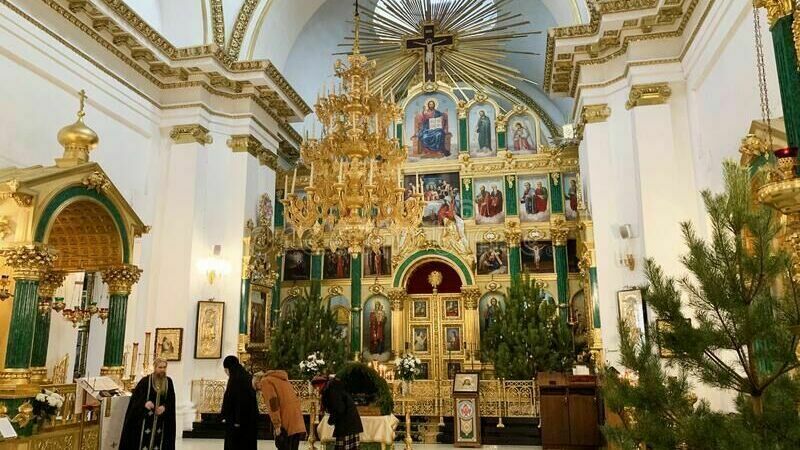Posted 7 января 2023, 13:56
Published 7 января 2023, 13:56
Modified 7 января 2023, 15:30
Updated 7 января 2023, 15:30

Question of the day: why did only 0.9 percent of Russians come to churches for Christmas?
Victor Levin
The population of Russia at the end of 2022 is 146,084,050.
Of course, not all of them are Christians and supporters of the ROC, which in October 2020, a well-known sociological company counted 63 percent in 50 regions and 137 cities (and this in itself is a huge amount - more than 91 million people!).
But if we count the percentage of those who came to Christmas services on January 7 (1.3 million), then the result is more than one point, but still deplorable - 1.4 percent of the total mass of believers.
And why did 98.6 percent of the Orthodox stay at home? Of course, one can take comfort in the fact that believers congratulated each other by sending hundreds of millions of GIFs and postcards via messengers and e-mails.
To the author of these lines (by the way, a convinced atheist) there were more than fifty such gifts. Friends, colleagues, acquaintances (at least half of whom are also atheists or agnostics with Manichaeans) practiced a gesture of politeness from the principle "if everyone has a holiday, then it's a sin not to congratulate".
Thanks. But none of the dozens of congratulators found heartfelt words about the significance of the birth of the Son of God in his life and how this circumstance helps in the current, very difficult conditions of existence. And judging by the passive sitting on home sofas during temple services, they did not expect to receive any consolation from the ministers of the cult.
And this factor is doubly surprising.
Firstly, the presence of ROC priests in the public space has increased many times over the past year. If you look at the mass communications of the authorities with the people, then no more or less significant event - from the launch of a new bike path to conscription - can do without people in cassocks. And in the materials of the Russian media, priests flash more often than the president of Russia.
Secondly, the level of anxiety and confusion of Russians, which has reached a maximum in 20 years (which has been recorded by all sociologists, social psychologists, etc. for many years), should objectively contribute to the expansion of the active mass of parishioners. Where else, if not in the church, to get answers to the most "unsolvable" questions?
However, the sabotage of Christmas liturgies by the potential flock has become directly proportional to the social activity of the ROC.
What's the matter?
In our opinion, sociologists could study the question of whether the ROC's overly active participation in state propaganda is the cause of the divide between believers and the church?
It is possible that the issue has no real background and the main reason for the "boycott" of churches is in abnormal frosts on the European territory of the country.
Or frosts have nothing to do with it either, and in the New Year the long-standing trend towards a decrease in the number of believers continued. As sociologists noted two years ago, "with the collapse of the USSR, the percentage of Orthodox rapidly increased until 2008, but in the next 12 years, the percentage of Orthodox began to decline: from 79% to 63-59%."By the way, out of all nominal Orthodox, of which 63%, only 14% go to church monthly and weekly, sociologists noted.
57% go several times a year or less. 28% do not go at all.
However, 1.4 percent (as on January 7, 2023) is 10 times less than the minimum figure in the 2020 study! And these former 14 percent did not concern particularly important holidays of the Russian Orthodox Church - Christmas and Easter, when millions of "passive" believers are added to those who regularly go to churches.
So the ROC has a reason to think - and what is happening in relations with parishioners? And how strong are the notorious bonds connecting the Russian people with the church?